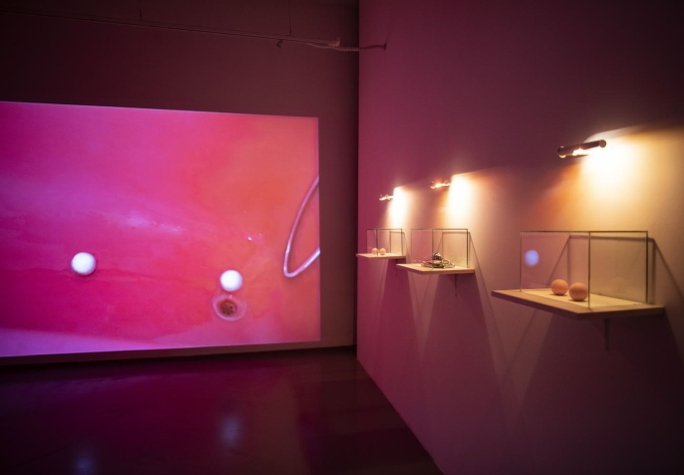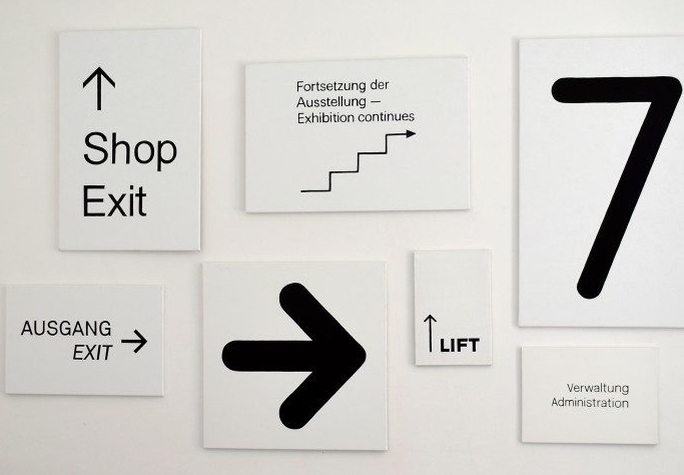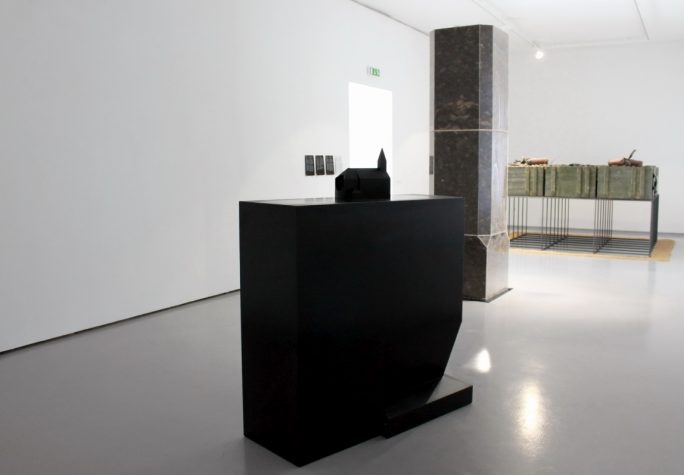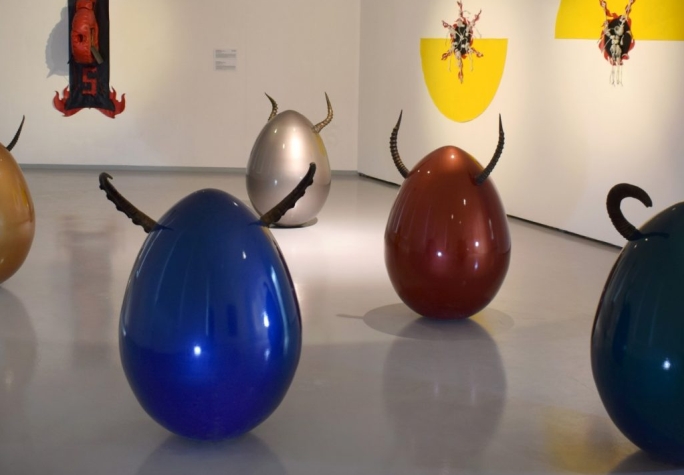The First Museum of Intermedia is a long-term exposition of artworks selected from the collection of intermedia of the Museum of Art ┼Żilina (particularly objects, installations and media art including videoinstallations and autonomus videos). Furthermore, it is also the first long-term exposition specializing in intermedia in Slovakia, presenting fine art after 1989. The word “museum” in the title is more or less paradoxical since the traditional type of exposition in our context still evokes a certain process of conservation and a model of stopping. This can be contrary to the nature of intermedia art, which is non-static in terms of its hybrid nature, and its integrity extends into other media (compared to traditional media, particularly painting, sculpture, drawing, and graphics) or bears basic attributes of media art, which is generative, but also of video art defined by the passing time. That is one of the reasons the content of the exhibition varies in specified intervals. The collection of the Museum of Art ┼Żilina mostly comprises static intermedia (objects and installations), and media art including videoinstallations and autonomous videos. The smallest part consists of conceptual artworks. Due to the methodology exercised in the nineties, this segment of the collections was labelled as intermedia art in the beginning of its building (in 1992). This term is used in the acquisition practice of the Musem of Art ┼Żilina to this day.
The Museum of Art ┼Żilina, the first of the museums of art operating in the region (also in Slovakia in 90┬┤s), established the collection of intermedia, following a primary effort to preserve the artworks created in the nineties, documenting and depositing them through a specific methodology that was quite challenging for a regional museum of art and its possibilities. The birth and existence of the intermedia collection of the museum are strongly related to the work of Katar├şna Rusn├íkov├í (director of the Museum of Art ┼Żilina between 1992 and 1997) and Radislav Matu┼ít├şk (chief curator of the museum between 1992 and 1996). Even today ÔÇô the decision to create the collection is seen as a great leap.
During the first five years of its operation (1992 ÔÇô 1997) ÔÇô the core period in terms of the volume of collected works ÔÇô The Museum of art was able to build a collection of intermedia art of an exceptional extent. Since 2006 it is continuously updated with the works of other authors to include pieces that represent the different forms and peculiarities of intermedia and media art in the new millenium. Today, this acquisition strategy allows for creating not only collections of such forms of art but also their arrangement in different thematic wholes.
A thematic construct appears to be an ideal model for The First Museum of Intermedia. The form of the exhibited artworks is predetermined (intermedia including objects, installations, ready-mades, and various types of media art), and generally represent the model of neo-conceptual art and its variations after 1989. Thus, it reflects the lines and discourses of contemporary art with the aim to highlight their interconnectedness through the works of the nineties and the new millennium, as well as to (at least briefly) outline the development and different transformations of their perception by the authors. The intent to present the works from the intermedia collections is thematically supported by the area of the exposition, which, given the nature of the exhibited works (often larger pieces), is substantially limiting.
The works in the exposition are the part from art collection administrated by Museum of Art in ┼Żilina (founder ┼Żilina self ÔÇô governing region)
The First Museum of Intermedia III
The First Museum of Intermedia III (2021 ÔÇô )
Gentle force
Authors of works:
Jana ┼Żelibsk├í, Eva Filov├í, Anetta Mona Chi┼ča a Lucia Tk├í─Źov├í, Gabika Binderov├í, Lucia Dovi─Ź├íkov├í, Em├Âke Vargov├í, Dorota Sadovsk├í, Veronika R├│naiov├í, Ladislav ─îarn├Ż
Exhibition concept and Curator:
Mira Sikorová-Putišová
The First Museum of Intermedia II SATELLITE
The First Museum of Intermedia II SATELLITE (2018 ÔÇô 2019)
Between information and memory
Authors of works:
Juraj Bartusz, Anton ─îierny, Ilona N├ęmeth, Roman Ond├ík, Peter R├│nai, Stano Mas├ír
Exhibition concept and curator
Mira Sikorová-Putišová
First Museum of Intermedia II ÔÇô Satellite is an extended presentation of artistsÔÇÖ works from the gallery permanent display. It extends the presentation of an artistÔÇÖs work by introducing another work that corresponds with the focus of the display of intermedia art and its current theme. This is achieved through ongoing updates of the exhibited installations, objects and video works from the collection of Museum of Art in ┼Żilina.
The First Museum of Intermedia II
The First Museum of Intermedia II (2017 ÔÇô 2021)
Between information and memory
Authors of works:
Juraj Bartusz, Anton ─îierny, Ilona N├ęmeth, Roman Ond├ík, Peter R├│nai, Stano Mas├ír
Exhibition concept and Curator:
Mira Sikorová-Putišová
The sequel to The First Museum of Intermedia is a collection of works which (in addition to belonging to a predefined intermedia and media formats) reflect upon the phenomenon of memory as an issue highlighted especially in the art of the new millennium. To some extent, this is related to moving away from articulating themes (especially neo-conceptualism) through a rather universalist model, and vice versa ÔÇô an inclination to individual languages, the nuances of which determine the themes based on local (Slovak) context.
The First Museum of Intermedia I
The First Museum of Intermedia I (2012 ÔÇô 2017)
Versions of neo-conceptual art, gender, and corporality
Authors of works:
Simona Bub├ínov├í, Pavl├şna Fichta ─îierna, Denisa Lehock├í, Karol Pichler, Boris Ondrei─Źka, Laco Teren, Jozef ┼áramka, Jana ┼Żelibsk├í
Exhibition concept and curator
Mira Sikorová-Putišová
The selection of works in the first (pilot) phase of The First Museum of Intermedia presents the typical elements of art with a core in the ninethies, their connection with the culminating eighties, as well as their continuity in the new millennium. The exposition was an “initiation” into intermedia art, highlighting the onset of media art (especially videoart) during the period. In the nineties, the language of postmodern art manifests through the disappearance of borders between elite and mass culture, as well as through syncretic style.





